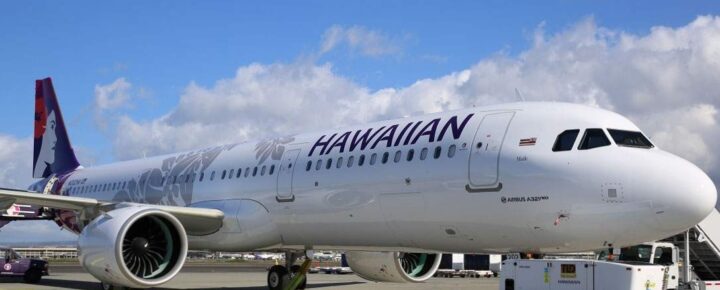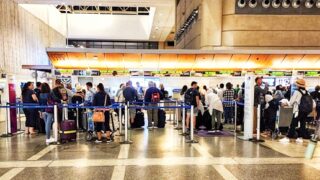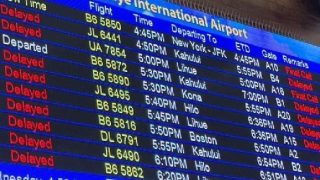As Alaska finalizes control of newly acquired Hawaiian Airlines, big changes are coming for travelers. From pricing and perks to planes, seat availability, and so much more, see how behind-the-scenes changes are shaping the future of Hawaii flights—and what it means for you. This all comes as Alaska announced a unique fare valid today only: Hawaii Fare War Saves 58% | West Coast to Hawaii.
How Alaska and Hawaiian plan to maximize every seat.
Alaska Airlines has built a reputation for its savvy, data-driven approach to airline operations. Hawaiian Airlines, on the other hand, has long been the islands’ folksy regional hometown player. But that is changing with headspinning speed as Hawaiian becomes an evolving and key part of the Alaska system. One of the most significant shifts ahead will be how seats are priced and allocated.
Using advanced technology, Alaska already fine-tunes inventory in real-time to increase revenue. This means more aggressive pricing models, overbooking strategies, and fewer last-minute deals that Hawaiian travelers may have relied on previously. Alaska sees itself as an up-and-coming version of United in terms of technology.
One example of this strategy is Volantio’s seat reallocation platform, which Alaska already uses to optimize seat availability and encourage voluntary rebookings.
On Wednesday, Volantio, a leader in AI-driven revenue and capacity optimization solutions for the airline industry, announced a 10-year extension of its partnership with Alaska Air Group, Inc.,” which owns Hawaiian Airlines. That reaffirmed the airlines’ “commitment to Volantio’s innovative Re-Commerce Platform.”
While this helps the new joint airline minimize empty seats, travelers could see fewer open seats and an increased likelihood of being asked to change flights if demand shifts. Hawaiian’s more traditional approach to managing inventory is being phased out to maximize every available space.
What happens to prices and perks?
The impact of these changes will be evolving, and won’t just be about seat availability. Fare fluctuation is expected to be even more volatile as Alaska integrates its revenue management tools with Hawaiian’s routes. Travelers may notice sharper price swings, especially around peak travel periods.
Separately, Hawaiian’s long-time loyalty program will also shift under Alaska’s control as the two discrete systems become one later this year.
Upgrades, elite benefits, and extra-legroom seats are also expected to be restructured. Alaska’s approach often favors dynamic pricing for these perks rather than flat-rate buy-ups or more predictable elite costs and benefits. For Hawaiian Airlines’ travelers accustomed to a more straightforward, albeit simplistic upgrade process, these changes may not always feel like an improvement.
More technology, fewer deals.
Alaska Air Group’s approach to maximizing revenue doesn’t end with pricing and seat allocation. The airline has heavily invested in machine-learning tools that analyze passenger demand patterns to extract the most profit from each flight. One key system it uses, Architect, dynamically adjusts fares, baggage fees, and upgrade costs in real-time based on changing demand. This ensures that the airlines will capture the highest possible revenue while making it harder for travelers to predict costs or find bargains.
For travelers who have relied on flexible booking strategies or waited for price drops to buy flights to Hawaii, these changes could result in higher fares. The days of scoring a deal close to departure may be fading as these pricing models across the industry continue to evolve.
What it all means for Hawaii travelers.
Alaska’s integration of Hawaiian Airlines is bringing structural changes that will be felt across pricing, perks, and the overall flying experience. While some travelers may appreciate Alaska’s efficiency and focus on loyalty benefits, others may find the transition frustrating as they navigate new rules, fewer available deals, and tighter cabins.
What should also be noted is that through Alaska Airlines’ fiscally sound strategies, Hawaiian Airlines was almost undoubtedly saved from facing a third bankruptcy. The acquisition by Alaska provided much-needed financial stability and vast resources for Hawaiian, allowing it to weather the turbulence brought on ongoing financial challenges. Alaska’s careful management and robust balance sheet ensured Hawaiian could avoid a severe restructuring that seemed imminent. This has not only protected Hawaiian’s future, albeit different, but also positioned the airline to continue its operations and expand, helping it navigate out of a dire financial situation that could have led to its demise.
The real question now is whether the changes will improve the experience or increase airline profits. Alaska’s track record suggests that revenue optimization will take priority, and for Hawaii travelers, that could mean paying more for less.
We welcome your comments!
Get Breaking Hawaii Travel News







Just landed on Maui, from San Jose, CA. Great flight. Starlink Internet was available through the entire flight. This makes traveling so much easier. Love it.
Booked a trip on Alaska last November for March 2025. So far, the outgoing flight was changed twice, now arriving 4 hours later to the islands. The return flight was switched to Hawaiian, my long time preferred airline. The upgraded seats I paid for with Alaska didn’t transfer and I had to go through both airlines to get a refund on the return upgraded seats, then repurchase them on Hawaiian. The flight also leaves earlier so we’re missing out on a total of 6 hours in paradise. Thus far, I’m not a fan. I’ll book future flights with Hawaiian as long as it’s allowed.
Personally I welcome the infusion of Alaska Airlines high tech savy management and options. I love the Aloha spirit and Hawaiian hospitality on HA flights, but unfortunately on the ground there’s a lot to be improved, including a clunky website and app that’s not reliable, ridiculously long wait times on the phone, and sadly ground personnel at HNL for inter island flights can at times be very off-putting and somewhat rude.
Aloha to all.
If these higher cost come with other benefits like being able to use the Alaska airlines wallet for HA tickets, rebooking tickets without having to call reservations, and combining travel credits to buy one ticket, it can’t come soon enough.
Alaska is unfamiliar with “big airline” amenities such as seat-back screens (IFE), flat-bed seats, amenity kits and printed menus. These are things that they may perhaps remove from Hawaiian but at the same time they have an opportunity to learn from HA and bring those things to the combined airline. I’m guessing Alaska will take the low-cost approach, but perhaps they see revenue to be made from offering a premium product?
I’ve never experienced dynamic pricing for baggage on Alaska airlines. Seems untrue.
What’s missing from this very detailed explanation (thank you), is that these strategies help differentiate a profitable airline from an unprofitable airline – an airline that will continue to be around, from an airline that could fold in bankruptcy.
As I’ve stated before, it is getting much cheaper to just simply stay home. Dynamic pricing sucks.
Give me more for less, and I will give you fewer trips for more money. Let’s see how that works.
While I’ll miss the “deals” it’s possible to speculate that a sharper focus on airline profitability by Hawaiian may have made their financial situation less dire
Deals seem to happen when the weather conditions and the stormy months brew. Regardless maybe there’s never a bad time to not be in Hawaii.